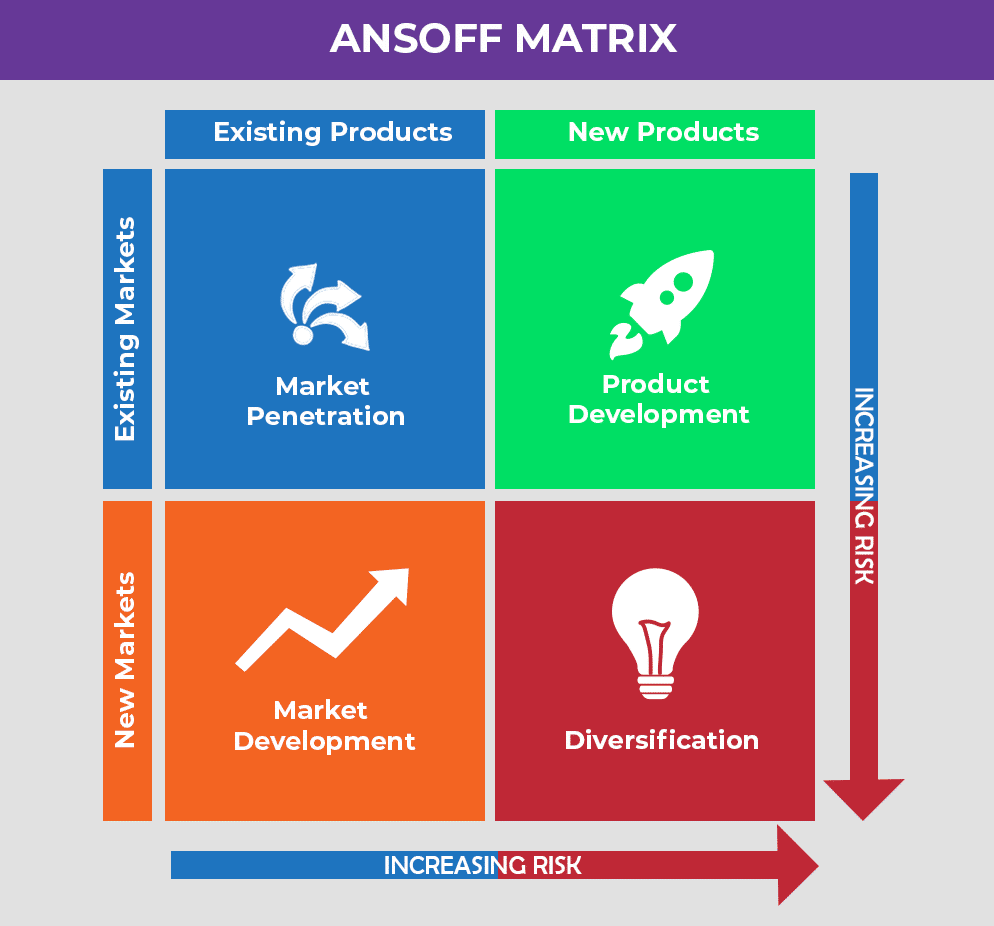8.1 Strategic direction
1/9
There's no tags or description
Looks like no tags are added yet.
Name | Mastery | Learn | Test | Matching | Spaced |
|---|
No study sessions yet.
10 Terms
Ansoff matrix picture

Market penetration
selling more of an existing product to an existing market
low risk low reward
approaches
gain MS from competitors
encourage customers to buy or consume more
changes to marketing mix
extension strategies
DIS market penetration
competitors reactions
short term
market may already be saturated
may not be cost effective
Market development
attracting new markets to buy existing products
approaches
enter a new international markets (risky)
move from B2B to retail
move to a new market segment
DIS market development
lack of knowledge of customers
product may not be accepted, desired or understood
business may not understand new market
alienation of current customers (separation)
Product development
selling new products to existing customers
must be a proactive market leader for this
approaches
launch improved version of existing product
introduce complementary product to develop a range
adapt product to suit a target market within a market
DIS product development
high R and D cost
competitor reactions
risk of cannibalisation (decreased in demand for a company’s original product in favour of its new product)
may shorten product life cycle
Diversification
selling new products to a new market
high risk high reward
related diversification - potential synergies
unrelated diversification - no relation between markets
approaches
R and D into new products and market research
take over of another business
DIS diversification
high risk as 2 elements are unknown
relies on heavy investment
cultural differences may exist
brand image diluted
limitations of Ansoff
some categories are grey areas
assumes 2 diagonal strategies have equal risk
may not take external factors into account